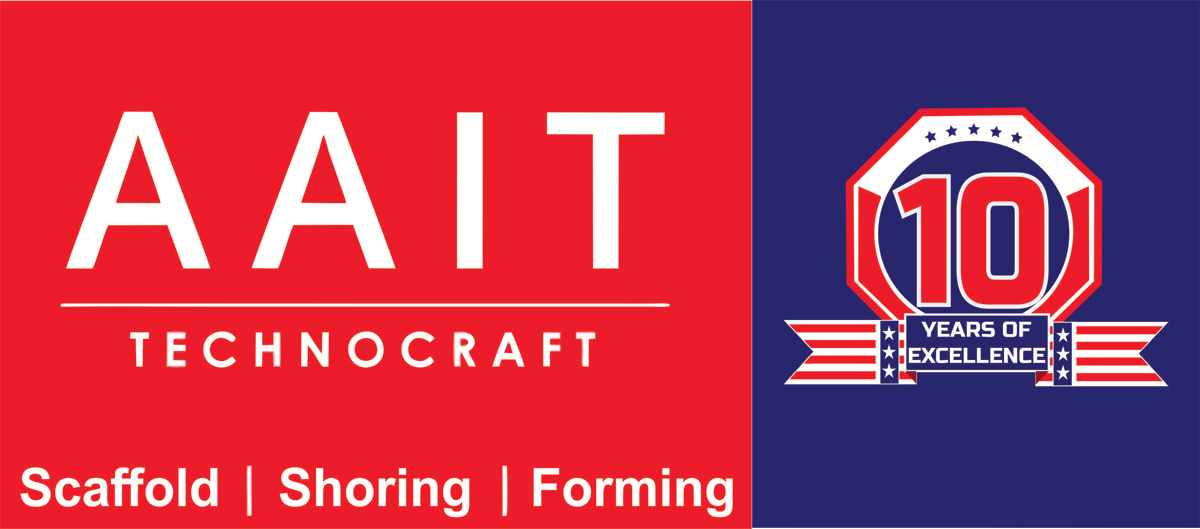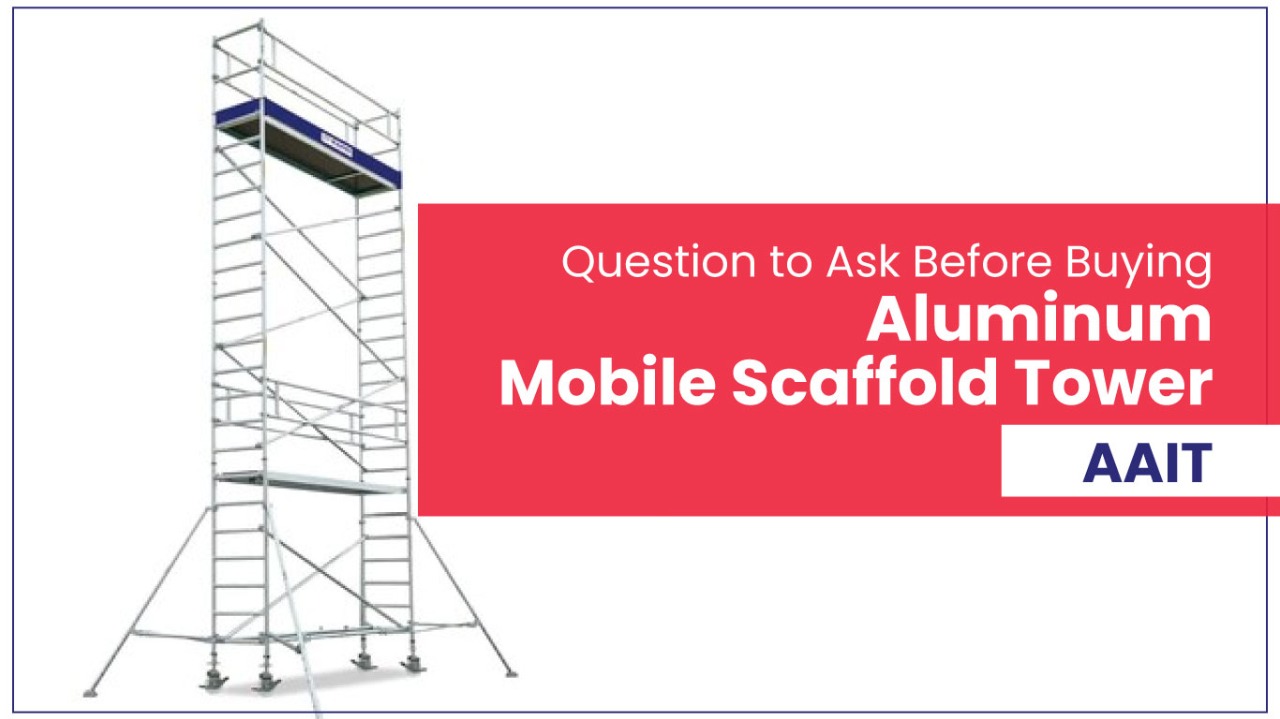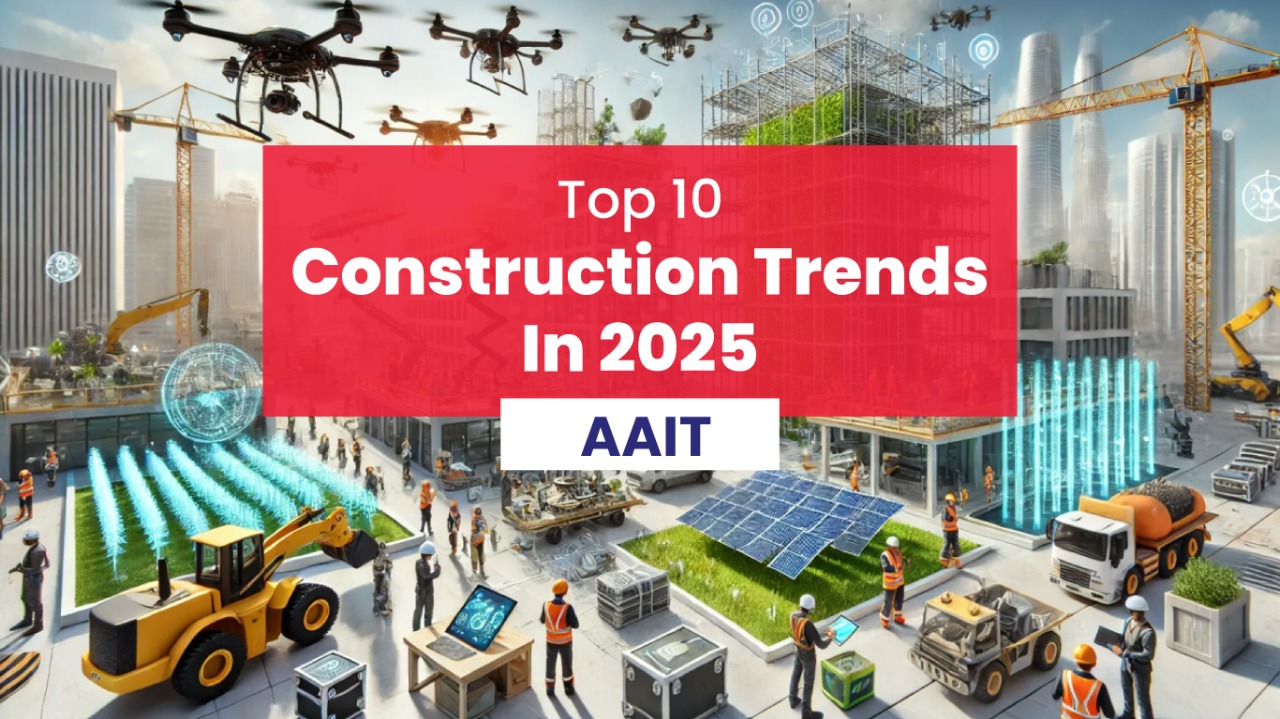Eco-friendly scaffolding practices for sustainable building initiatives
Comments Off on Eco-friendly scaffolding practices for sustainable building initiativesAs we pace ahead with the world, it has been important to mitigate climate change. With this in mind, companies are now focusing on sustainability. To develop a greener future, firms have now embraced eco-friendly practices. Further ahead, companies have found it beneficial to interrogate sustainable processes with the practices. So, in this article, let’s check more about why it’s important to adopt eco-friendly scaffolding practices.
What practices must companies follow for a sustainable future?
In the construction industry, excess material waste is always generated at the site. But, if firms embrace certain practices, then waste can be reduced. This will minimize the environmental impact as phases progress. Let’s check what companies can consider while adopting sustainable practices.
Accurate Estimation
Before erecting a scaffold, companies can estimate the overall requirements. Apart from minimizing errors, this can help reduce material waste. Moreover, construction companies can use sustainable materials that are durable.
Modular Scaffolding
As firms strive to focus on reusability, teams can consider modular scaffolding. Such a kind of temporary structure can then be used repeatedly. Way ahead, modular designs can be adjusted for diverse projects. Workers will then have to not worry about a custom-built scaffold.
Effective Planning
Even before setting up a scaffold ahead of time, workers can organize everything effectively. To avoid making adjustments, they can also think about a better dissembling process. Apart from reducing excess waste, effective planning will enhance overall efficiency.
Regular Maintenance
Among eco-friendly scaffolding practices, conducting maintenance tasks regularly can certainly help. The tasks will help to increase the lifespan of scaffolds. Companies can then expect to use the scaffold again with maintenance. This will eventually reduce the generation of waste considerably.
What to follow while selecting sustainable materials?
While adhering to eco-friendly practices, companies can use recyclable materials. This can promote building a greener future ahead. Use of sustainable materials can also reduce carbon footprint. Here’s what companies can follow.
Source Timber Responsibly
When teams source timber from certified forests, it can help preserve the ecosystem. Such practice will also reduce the impact on the environment. Ensuring that the material comes from certified sustainable forests will also reduce deforestation.
Use of recyclable materials
Repurposing of scaffold components can be achieved with recycling. After a certain timespan, metallic components can be melted. Later, they can be reused for new scaffolding systems. Ultimately, this practice will reduce waste that’s sent to landfills.
Biodegradable Materials
With the use of biodegradable materials, companies can move on with eco-friendly scaffolding solutions. Through experienced professionals, they can also develop components that can break down naturally. Once they decompose in a natural way, the environment will not be affected.
What kind of innovation companies can introduce for scaffold designs?
As technology evolves, the approach to scaffold design can make the industry sustainable. This is accomplished with an improvement in resource management. Sustainability can also be achieved with the reduction of waste. Let’s now check what companies can do to improve designs.
Digitalisation
With the use of CAD software, companies can design scaffolds accurately. A precise estimate of the material can help to use resources efficiently. Digitalisation will therefore reduce waste considerably.
Offsite Prefabrication
Fabricating various components at a certain location will assure quality. Once the scaffold parts are brought to the site, less time can be spent on adjustments. During the assembly process, workers can also expect less waste.
Load Optimization
Through some tools, workers can use diverse components effectively. This will prevent crossing the load bearing capacity and unnecessary replacements. The team will no longer have to think about buying new components if the existing ones are not compatible.
Rapid Deployment
With quick deployment of scaffolds, workers can use the structure temporarily. In those instances, they don’t have to bother about a scaffold setup. They can actually use solutions that are adaptable with resource conservation.
Why adopt Sustainable Scaffolding Practices?
When you wish to implement eco-friendly practices, you have to make an investment. But, as a business owner, the implementation will benefit you.
Lower Costs
Once you reduce material waste, you can expect better optimization of resource usage. With time, you can also save costs considerably.
Regulatory Compliance
Soon after you start following the practices, the organization can comply with the regulations. You also don’t have to bear fines as soon as the company stays compliant.
Environmental Stewardship
By showing your commitment to the practices, you can enhance business reputation. Moreover, you can also attract the attention of clients when they know that the business is environmentally conscious.
Towards the end, adoption of sustainable practices can reduce negative impact on the environment. People will also be aware of the fact that you’re preserving various resources.
Building a Greener Future
With everything considered, you will be building a sustainable future with eco-friendly scaffolding practices. You will also soon realize that the efficiency has been improved. This is bound to occur when you introduce innovation and choose sustainable materials. Above all, you will be augmenting a greener future in the construction domain.
Conclusion
If you’re seeking high-quality components and accessories for a scaffold, then contact AAIT Scaffolds today. As we strive to offer scaffolding solutions for diverse projects, we assure you reliability. Efficient supply chain management by our team also ensures that the components are delivered on time.
What to consider before purchasing a mobile aluminium scaffold tower?
Comments Off on What to consider before purchasing a mobile aluminium scaffold tower?When you and your team are working on construction projects, you must select the right scaffold. While you come across many options in the market, you must consider many factors. After assessing everything thoroughly, the scaffold will be functional and reliable. So, in this article, we shall cover the essential considerations for aluminium mobile scaffold towers.
What must you consider while buying an aluminium mobile scaffold?
While buying an aluminium mobile scaffold, many factors have to be considered. The scaffold must be safe to use and suitable for your needs. In this section, we have covered four of the most important things that you should consider.
#1. Give Prominence to Quality Material
When you’re about to purchase an aluminium mobile scaffold, first check the material’s quality. As Aluminum is known for its strength, and resistance to corrosion, it’s ideal for scaffold components. High-quality aluminium is also durable and capable of withstanding heavy loads. Conversely, be cautious about components made from low-grade aluminum. These are susceptible to bending and corrosion with time. To confirm the quality, you must also seek material specifications in detail. After all, your investment is worthwhile only when the material is good. The scaffolding components will also tend to last longer with good quality metal.
#2. Verify Compliance With Safety Regulations
Another factor to consider when purchasing is safety. Once you source the right components, they should meet the safety standards. Most of the time, the manufacturers comply with regulations such as OSHA and EN1004. These standards ensure that the components are tested for strength. Way ahead, you must seek a scaffold that has guardrails and secure locking mechanisms. They must further have non-slippery platforms so that workers don’t fall accidentally. The mobile scaffold must also have wheels that can be locked. This will prevent movement when tasks are carried out. Above all, you must check for labels and certifications from regulatory bodies.
#3. The Most Current Production Techniques
As technology evolves, it has led to the production of reliable aluminium scaffolds. So, while choosing a mobile scaffold, ensure that it’s built using the latest methods. Modern scaffolds are beneficial due to precision engineering. Advanced welding techniques also ensure greater stability. With certain methods, the overall design of the scaffolds is further optimized. Innovations have also been making scaffolds safer and more durable. By considering the latest techniques, you can eventually make sure that the modern demands are met. Additionally, when you come across aluminium mobile scaffold towers, observe extruded tee pieces. These will enable it to connect columns firmly for better security.
#4. Choosing The Best Scaffold Tower For Your Project
Whenever you’re choosing the scaffold, the choice depends on project requirements. Hence, you have to evaluate the height requirements. If you’re executing a large-scale project, then you may need a tall scaffold. But, for tasks like painting and cleaning, a usual scaffold is sufficient. Besides, the design and the layout must also align with the working environment. Apart from ensuring easy access, the scaffold must offer sufficient workspace. In addition, consider mobility features if the scaffold has to be moved often. Workers must also be able to lock wheels securely. On the other hand, check the load-bearing capacity and avoid overloading the structure. Most importantly, the scaffold must be easier to assemble and dismantle.
Besides the above considerations, you must never forget to check the load-bearing capacity. You must also ensure that the structure can sustain the weight of workers and the tools. Workers must also be able to adjust the scaffold for easy storage and transportation. Moreover, when you’re choosing a reputed manufacturer, check for warranty. If the warranty period is long, then you don’t have to worry about the quality of the aluminum mobile scaffold tower.
Conclusion
Finally, if you’re seeking a lightweight mobile scaffold, then why not choose AAIT Scaffolds? While we have served many industries through the years, we are committed to delivering quality. Our scaffolding solutions will also meet the various needs. You can use them for maintenance tasks, construction projects, and event staging. Most importantly, we ensure timely delivery of scaffold components through efficient logistics.
Top 10 Construction Trends in 2025
Comments Off on Top 10 Construction Trends in 2025As companies continue to transform, sustainable practices and modern technologies are becoming prominent. Moreover, the advancements are transforming the ways in which buildings are built. But, are you really aware of the construction trends in 2025? Well, scroll through the article to know more about the trends. The article will also cover more about challenges firms will face while adopting technologies.
Top 10 Construction Trends that will prevail in 2025
As we pace ahead in 2025, the construction industry is expected to evolve with advancements. Let’s check the various trends that will prevail in 2025.
1. Modular Construction
Owing to its sustainability and efficiency, modular construction will slowly become popular. While manufacturers are designing various components, they can also develop the infrastructure. Once the modules are carried to the site, the project timeline will also be reduced.
2. 3D Printing
Through 3D printing, building components can be designed as per the needs. This technology will eventually reduce the construction time and the associated labour costs. As a result, you can expect complex designs and affordable housing across different regions.
3. Use of Artificial Intelligence (AI) and Machine Learning (ML)
Among the construction trends in 2025, AI and ML will be widely used to optimize designs. Safety will also be enhanced on construction sites as teams continue to place safety tags. Risk management will further be possible as the technologies help analyze large datasets. While the team executes projects, AI and ML will enhance project efficiency as well.
4. Building Information Modeling (BIM) Representations
In the present era, BIM will be essential for planning and designing construction projects. Professionals will also be able to keep track of building performance with BIM and digital twin technology. The 3D representation will also support project management and predictive maintenance.
5. Sustainable Practices
For many years, sustainability will be the keystone of construction projects. Builders and teams will focus on reducing the environmental impact with energy-efficient systems. As 2025 commences, there will be significant development as teams continue using recycled materials. Above all, sustainable practices will enable companies to reduce operating costs.
6. Smart Building Technologies
Over a period of time, use of smart building technologies will be among the construction trends in 2025. Building contractors will also be able to optimize use of energy with IoT sensors. As 5G networks keep expanding, data analysis will enable teams to minimize the operational costs. Various sensors will also control HVAC, ventilation, and lighting.
7. Use of Drones & Robotics
Robots and drones will improve safety and efficiency in the domain. When professionals use drones, they can inspect the sites with an aerial view. On the other hand, robots can take care of tedious tasks. These will mitigate the risks regardless of the construction project.
8. Augmented Reality (AR) and Virtual Reality (VR)
VR and AR will help to identify design-related issues in real time. By presenting more about the site digitally, the technology will offer a great experience. Builders can visualise the space even before proceeding with construction. Effective training can also be imparted with these technologies.
9. Skill Enhancement & Workforce Automation
While organizations embrace automation, it will transform the construction processes. Tasks like equipment operating and welding will be automated ahead. Moreover, companies will come up with training programs that will help workers enhance skills. They will then be able to manage and use advanced machines.
10. Circular Economy and Material Reuse
As time passes by, construction companies will follow the circular economy concept. The teams will perceive the reduction of material waste and repurposing of debris. Individuals will also ensure that the parts are reused at the end of the life cycle.
What are the benefits of Modern Construction Techniques?
Many modern construction techniques are used by companies in today’s world. These will prevail with construction trends in 2025. Let’s check out the benefits of the techniques.
Increased Efficiency
With the utilization of advanced technologies, teams can streamline the building process. For instance, when companies adopt 3D printing and automation, it helps to complete tasks swiftly. Few errors are also committed, and the project is completed quickly. Besides reducing material waste, the innovations can minimize significant delays.
Cost Savings
By reducing the construction time, modern methods can lower costs. Contractors can also save on labour with efficient resource management. The use of prefabricated materials also makes the projects inexpensive and affordable. People will also not bear high maintenance expenses because there isn’t any need for frequent repairs.
Enhanced Safety
Through smart technologies, the team can ensure safety at the site. Automated machinery can also mitigate the need for manual labour. The machines are useful when dangerous tasks have to be carried out. Risk management also gets enhanced with data monitoring. Moreover, teams can stay compliant with safety regulations. This, in turn, reduces the insurance costs when project execution is in full swing.
Environmental Impact
When you observe modern construction, teams use certain techniques and sustainable building materials. Hence, the practices can reduce environmental impact. It can also add on to energy savings and conservation of resources. While teams meet environmental goals, the regulatory requirements are also met.
Improved Collaboration
Tools that are powered by AR, BIM, and VR support effective collaboration. While the project moves ahead, engineers and architects can visualize the designs. This reduces the instances of miscommunication when everyone is on the same track. Seamless collaboration can also be expected with BIM. This model serves as a platform for all relevant data across the project’s lifecycle.
What Challenges firms face with Modern Construction Techniques?
Leveraging modern construction techniques is beneficial. But, many challenges can arise along the way. These can hold construction companies to implement the techniques.
High Initial Costs
Even when modern technologies can help save considerably, small firms can’t bear the initial investment. While using AI or robotics, the team will need a lot of capital. Moreover, it’s tough to secure funds when companies are making a big investment.
Skills Gap
As automation arises with the construction techniques, many workers need to be knowledgeable. Hence, there’s a necessity to conduct training programs to develop new skills. The skills shortage can then drive up the cost associated with upskilling.
Regulatory Hurdles
Due to obsolete regulatory frameworks, many companies may not adopt modern techniques easily. For instance, permission has to be sought for driving drones across certain landscapes. Modular construction also might be difficult when building codes are not considered. This is also observed with design driven by AI.
Technological Integration
While integrating technology, companies have to encounter many challenges. AI and BIM have to seamlessly work together to optimize the workflow. But, in case the services are from different providers, then they may not be compatible.
Resistance to Change
Embracing construction trends in 2025 can sound easy in the construction industry. But, when companies are following conventional methods, teams may resist. The transition towards adopting modern techniques means following new practices. Job insecurity may then creep in when professionals have been following established practices.
Conclusion
Finally, the construction domain has been evolving rapidly. While new technologies are emerging with time, the evolution is due to the changing needs. The trends stated above are also going to prevail in an era where efficiency is crucial. But, to gain the most from the innovations, companies have to bear substantial costs. They also have to address the skills gap and update the regulatory frameworks.
If you’re managing a construction project in the USA, why not buy scaffold components from AAIT Scaffolds? While we assure you quality, our scaffolding solutions have met diverse needs. We also assure support and timely delivery of the components regardless of the location.












 Download
Download

